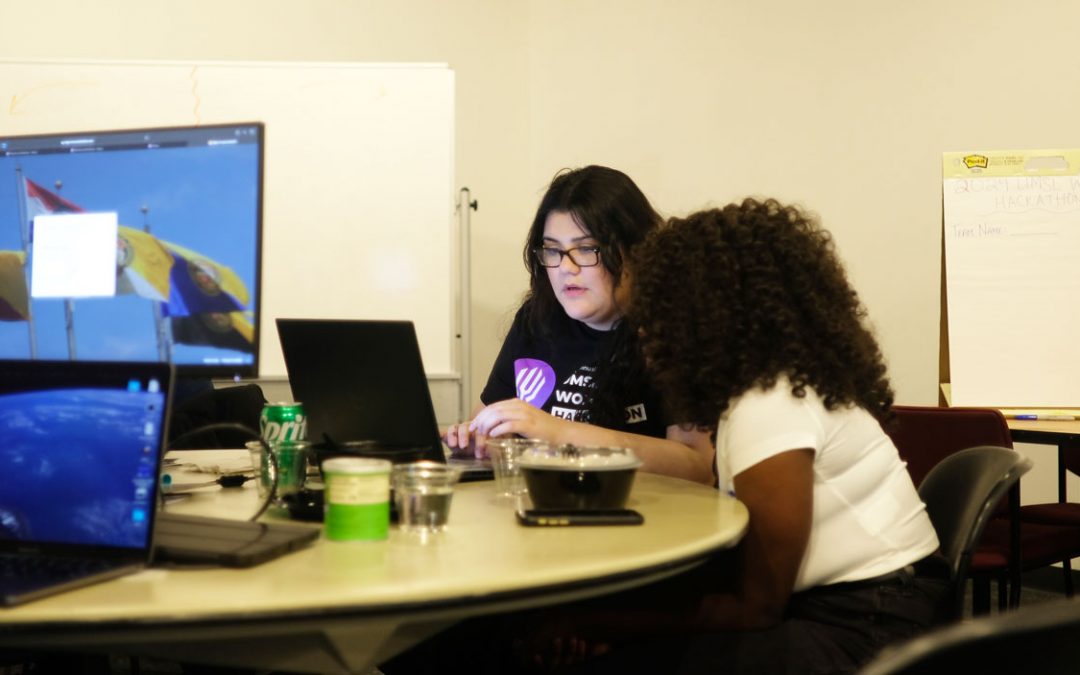
Mary Lynn Longsworth, a senior anthropology major at UMSL, poses with marbles that are representative of ones recovered from the Kerry Patch site
Child’s play is serious business for Mary Lynn Longsworth, a senior anthropology major at the University of Missouri–St. Louis.
In January, Longsworth had the honor of presenting her paper on children’s archeology at the 2012 Conference for the Society for Historical Archeology in Baltimore. She’s writing her senior thesis on the subject of toy marbles recovered from late-19th-century backyards and outhouses in the Irish and German community of north St. Louis, once known as Kerry Patch. The present-day location puts it a few blocks north of the Edward Jones Dome.
Longsworth said marbles were a great equalizer in a community. People from across the social spectrum played with them.
“Both boys and girls play with marbles. Rich and poor play with marbles,” Longsworth said.
Of course, some marbles were nicer than others. The most expensive marble was an agate, which was made of ground stone and had a beautiful rich honey brown color. The cheapest marble was made of clay.
“Kids could make clay marbles,” Longsworth said.
In the 1880s, the time period that Longsworth looked at, marble production was mainly coming out of Germany.
She said playing marbles was a high-stake game.
“You were literally playing for the other guys’ marbles. If you played for keeps … if you won, you got every single marble the other person had,” Longsworth said.
She said the term “lose your marbles”– was tragic for a kid.
Longsworth said even the wealthiest family didn’t always have the best marbles. The richest person in the Kerry Patch community was a German immigrant grandfather, whom in the census data from that period, was listed as a retired businessman. It appears his granddaughter only had six plain porcelain marbles. Such inexpensive marbles are not what one would expect from such a wealthy family. Longsworth said the girl’s inexpensive marbles either means that she was not a very good player or “grandpa was incredibly frugal.”
She found that the Irish immigrants had the most expensive marbles and the widest variety.
“That tells me that either the kids were very good players or like families these days who will go out and purchase Xboxes and iPads and things like that for their children, because in the backs of their minds it’s, ‘I’m giving something better to my child than I had,”’ Longsworth said.
What does she hope will come of her research?
“My goal is to say that the rich kids did not have all of the best marbles, nor did they have the most marbles, and that even supposedly destitute, poor … insert dramatic sigh … kids will play,” Longsworth said.
Longsworth credits Patti Wright, associate professor of anthropology at UMSL, for turning her onto children’s archeology.
“Well, you’ve got a child, why don’t you look at toys,” she recalled Wright suggesting.
Longsworth said she could have researched doll parts or tea sets, but was really struck by the toy marbles, and the fact that they were “genderless” and “economic- less” and completely neutral.
Wright said Longsworth is enthusiastic and highly motivated and has been able to combine her passion for children with her passion for historical archaeology.
“Her research on marbles and child’s play is significant as it addresses a group of individuals whose behaviors are often neglected in historic and archaeological discussions,” Wright said. “She is doing a great job representing the UMSL undergraduate community. “














